In the rich tapestry of American art history, Frederic Edwin Church emerges as a distinguished thread. Born into a comfortable environment during the 19th century, Church’s proclivity for the arts led him into the nurturing arms of the Hudson River School and Thomas Cole, one of the giants in American art. Delving into his early life, it’s imperative to consider his artistic developments and feats alongside the environment that influenced them. This expedition is not just limited to the early stages as we will also voyage into his progression, the development of a unique style that captivated the American art scene, and the pinnacle of his life – his crowning achievements.
Early Life and Education
Delving Into the Rich Palette of Frederic Edwin Church’s Artistic Journey
Can there be a more fascinating endeavour than unravelling the threads of inspiration that weave the tapestry of an artist’s oeuvre? In today’s deep dive, Frederic Edwin Church plays the roles of both muse and maestro, as we embark on a journey through the kaleidoscopic evolution of this acclaimed landscape painter.
Born in Hartford, Connecticut in 1826, Church’s creative journey set sail from an early age. His father, Joseph Church, a successful businessman, recognised his son’s talent and supported his pursuit of art wholeheartedly. By 18, Frederic was demonstrating such incredible prowess with brush and palette that renowned painter, Thomas Cole, took him under his wing and into the Hudson River School of painters.
For two years, Church studied under Cole – a time described as akin to poring over enchanted almanacs of picturesque landscapes. Adeptly navigating the canvas under his mentor’s tutelage, Church came into contact with the romanticism and direct observational tonality that characterised Cole’s works. Castles perched on cloud-garbed cliffs, water bodies glistening with moonlight’s mischief, and sunsets morphing into mesmerising mosaics, Church absorbed these landscapes and Cole’s philosophy of delineating nature’s grandeur with fervour.
Talent, tenacity, and diligent tutoring led to Church’s first exhibition at the National Academy of Design in 1845. By comparison to his contemporaries, his portfolio glowed with unmistakable originality, showcasing his expert command over light and diverse atmospheric effects. Like a maestro conducting a symphony of colours, Church seemed to have an orchestra of hues at his command. From the diffused Albanian sunlight in “The Aegean Sea” to the nebulous Northern lights of winter in “Aurora Borealis”, his works each bore his distinctive signature style.
Church’s artistic evolution continued to bloom with his global travel expeditions. Travelling across North America, Europe, the Middle East, and the Arctic, he became acquainted with diverse topographies that added newer palettes to his artistic repertoire.
The landscape of the Andes, in particular, held a special place in his heart. This South American mountain range’s dramatic vistas were a shimmering heritage left to Church by Humboldt, a German naturalist whose writings left an indelible inspiration on the artist.
Art enthusiasts will find it particularly fascinating to know that Church’s works are imbued with a strong belief in Manifest Destiny. This 19th-century doctrine posits that the expansion of the US throughout the American continents was both justified and inevitable. Amid the breathtaking grandeur of his landscape paintings, one sees a subtle justification of territorial expansion.
This brief journey into Church’s artistic canvas holds a mirror to the confluence of experiences that refined his talent. From the sturdy anchor of early parental support to the gentle currents of Cole’s influence, from the vibrant hues of foreign landscapes to the heady philosophy of Manifest Destiny – much like a landscape slowly revealing its depth under a rising sun, every interaction and encounter enriched Church’s repertoire, earning him an incontestable place in the annals of art history.
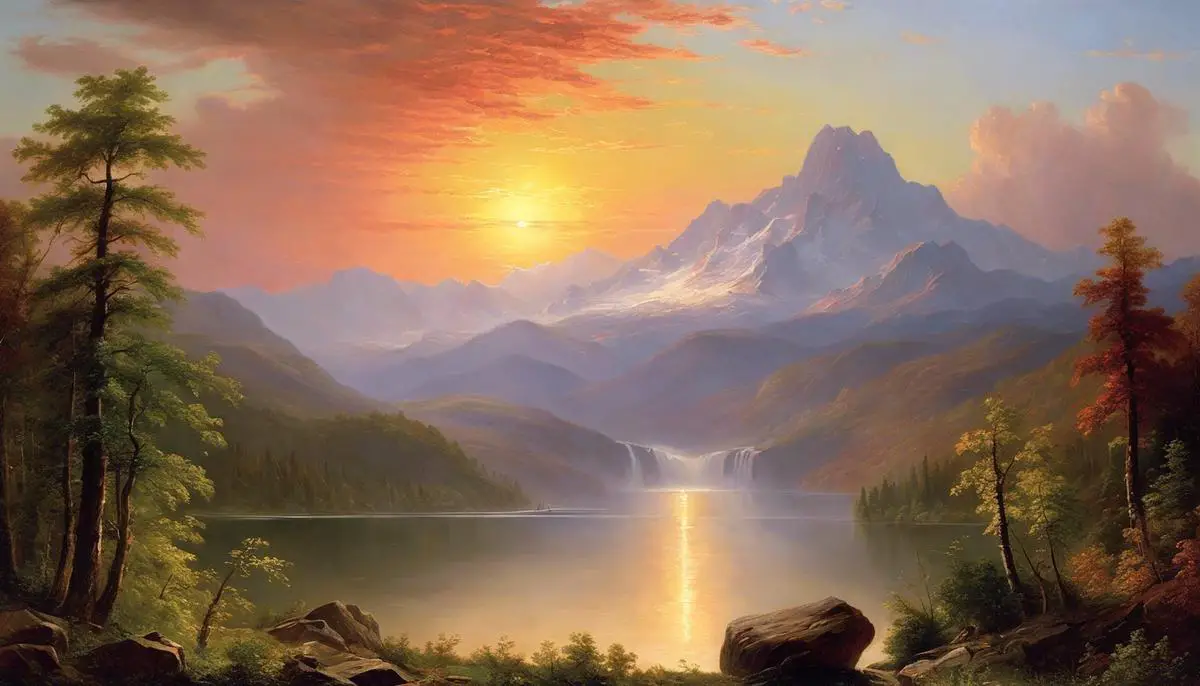
Development of Style and Achievements
From the ethereal landscapes of America to the exotic locales that Church immortalized on canvas, the artistic trajectory of Frederic Edwin Church blends both a wanderlust spirit and a mystifying ability to capture the sublime in nature. As an artist who fearlessly pushed the boundaries of his craft, let’s delve behind the scenes of his profound aesthetic revelations and impressive oeuvre.
Having been sprouted off the roots of the Hudson River School and under the wing of Thomas Cole, Frederic Edwin Church was set on concocting his artistic brew. This brings us to the stepping stone of Church’s evolution– landscape and the Luminist style. As we have seen, the young protégé bore a unique mastery over light and atmospheric techniques. This was truly brought to light with his piece “Twilight in the Wilderness”. A chaotic magic of reds and oranges entrance the viewer, creating a compendium of warm, vibrant hues as the sun sets over a wild landscape. The painting is renowned as a powerful testament to his advanced handling of colour and tonal transitions, unravelling an evocative scene that Felipe is known for.
Manifest Destiny had already surfaced within Church’s work, but now the artist was venturing out to landscapes far and wide. His wanderlust led him to explore the natural wonders around the globe, illuminating his canvas with a broader color palette and complex dimensions. His trip to icebergs in the North Atlantic in 1859 manifested in his acclaimed “The Icebergs” painting, bringing the frosted wilderness to life with an attention to detail that was nearly scientifically precise. Here Church showcased a consolidated grasp over perspective, light, and detail that attested to his growth and dexterity as an artist.
Following his expeditions to Ecuador, it became clear that Church’s art was becoming thematically global, echoing a cultural ethnography through the medium of paint. His famed piece ‘Heart of the Andes’ was deeply shaped by Alexander von Humboldt’s ideas, marrying exquisite detail and a nearly photographic precision to narrate the majesty of the Andes. Painted meticulously, the cascading mountains, luxuriant flora and endemic fauna were Church’s silent poetry – a masterpiece stemming from not only the exploration of landscapes, but of culture, and of the very fabric of life.
Ultimately, Church’s evolutionary journey within the realm of art is remarkable to analyse and comprehend. From an aware painter to an adept voyager, Church unravelled several layers of his artistic personality, leaving an indelible impact on the history of art. His ability to use his canvas as a transcontinental lens served as a testament to his artistic prowess. From the primordial expanses of the incandescent wilderness to the serene Andes, Church seamlessly transcended the confines of his stomping grounds into an immersive world gallery. His charismatic renditions of landscape, diversity in mortif, and exhibiting grandeur of nature in its truest form truly echo his mark in the epoch of art.
Trekking the journey of Frederic Edwin Church offers an enchanting voyage into the art world. It’s a poignant reminder of the immense emotional depth and tension residing in the bond between men and nature, vividly painted with Frederick’s own imaginative brush. From his early Hudson days to his later explorations of phenomenal landscapes, Church has unravelled a fascinating tableau of an artist in constant evolution, casting a shadow that to this day, continues to inspire and awe with its visionary splendour.

Legacy and Influence
Beyond the opulence of oil and canvas, nestled within enchanted landscapes, lies the enduring legacy of Frederic Edwin Church. A dynamic force in the 19th century American art scene, Church’s artistry continues to leave an indelible mark on the world of art. Quintessential to his legacy is the mastering of delicately balancing scientific precision with emotional resonance.
Church’s endeavour to capture the world’s rugged beauty became synonymous with his artistry. He did not merely paint landscapes; instead, he bestowed upon them an ethereal vibrancy, integrating a narrative that seemed to breathe life into every painting.
“Twilight in the Wilderness”, one of Church’s most influential works, is the embodiment of his visual opulence. Its strikingly hyperreal depiction of a sunset on the brink of Civil War unearths Church’s uncanny ability to evoke dialogue through his works. His atmospheric realism, complimented by his unique tonality, induces our senses – a riveting testament to his gripping command over light’s transformative power.
Travel also played a substantial role in Church’s artistic maturation. His extensive expeditions lent an ethnographic approach to his art, conveying diverse landscapes from the ice-encrusted Arctic to the lush terrains of Ecuador. This collective global perspective lent credibility and depth to his work. His art became a transnational canvas wherein he shared his global experiences through his gifted eye.
A noteworthy piece that perfectly illustrates Church’s fusion of art and science is the awe-inspiring “The Icebergs”. Minute details, such as the organic blue veins of the glaciers combined with an encapsulating realism, project an unspoken commitment to scientific authenticity. The immersive experience that his paintings provide holds relevance even today, displaying vast untamed landscapes – visual documentation of environmental grandeur and its impending fragility.
His masterpiece “Heart of the Andes” offers a brilliant tribute to Alexander von Humboldt. Church’s decision to include tropical species native to Andes, meticulously detailed, echoes Humboldt’s scientific aesthetic and adds novel authenticity to his work. Hence, Church’s paintings metamorphose into a confluence of artistry and empirical understanding, embodying a potent testament to his timeless ingenuity.
Unraveling Church’s artistry unveils an emotional dialogue, harmonising human existence with nature’s awe-striking beauty. This coexistence, though complex, was coherently unfolded and investigated through Church’s works, creating stunningly evocative narratives.
Church’s legacy lies within his ability to bridge the chasm between the tangible realm and ethereal. Church’s fusion of artistry and scientifically accurate depiction, with his innate ability to intrigue the audience’s senses, undeniably continues to inspire waves of artists. Adopting his lessons of observing the world, his canvas is a testament to the endless possibility of creativity and exploration for artists around the globe.
An artist who constantly evolved, Church’s work illuminates the beauty of growth, replication, and artistic innovation. His work continues to reverberate through the artistic milieu, imprinting an eternal influence on the very fabric of art. It is through him that we learn the quintessential lesson of art – that our canvas, like Church’s, can stretch far beyond the borders of imagination.
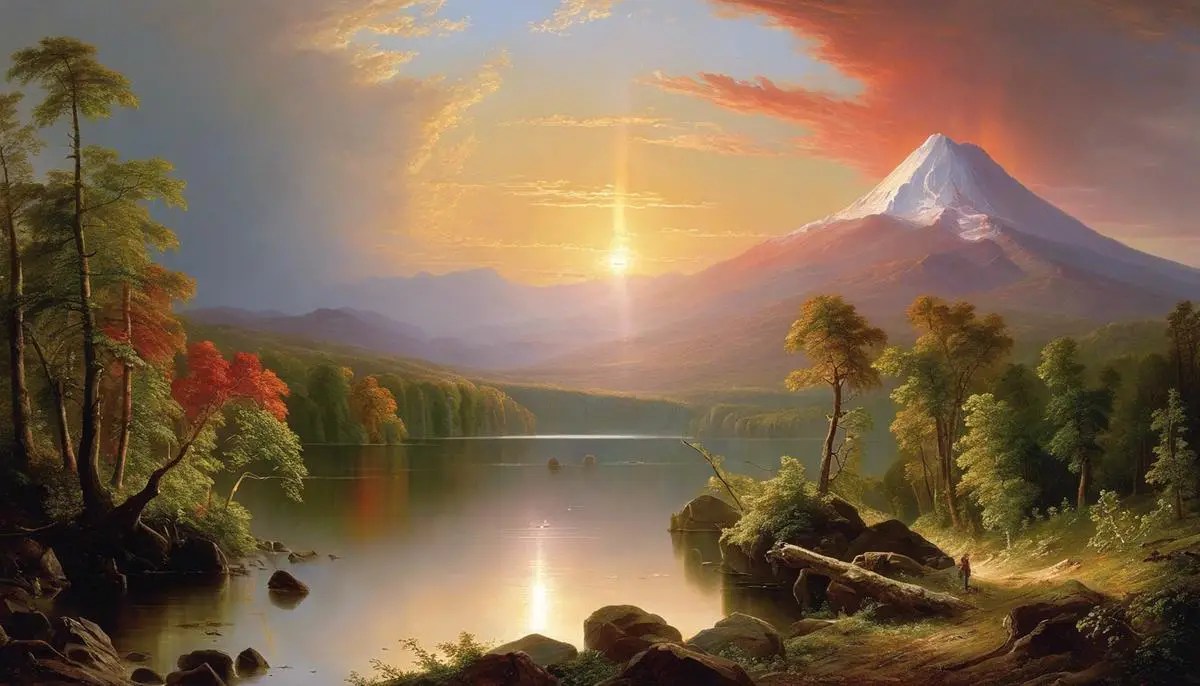
Frederic Edwin Church left the world richer than he found it. His impressive legacy, one punctuated by a stunning portfolio and significant influence on American art, echoes across time. To simply dub him as a renowned artist would be an understatement; Church was an innovator, an adventurer, a genius in his field. His style, marked by meticulous detail and grandeur, and his life, marked by integrity and perseverance, continues to resonate through the halls of the art world. The grasp of his works stretches well beyond the canvas, now adorning the walls of modern exhibitions, pervading the studies of art scholars, and heartily inspiring a new generation of artists. Church’s life’s work illustrates a devotion, a love, a fervour for art that was not just a profession, but a life passionately lived.
Recommend0 recommendationsPublished in Uncategorized
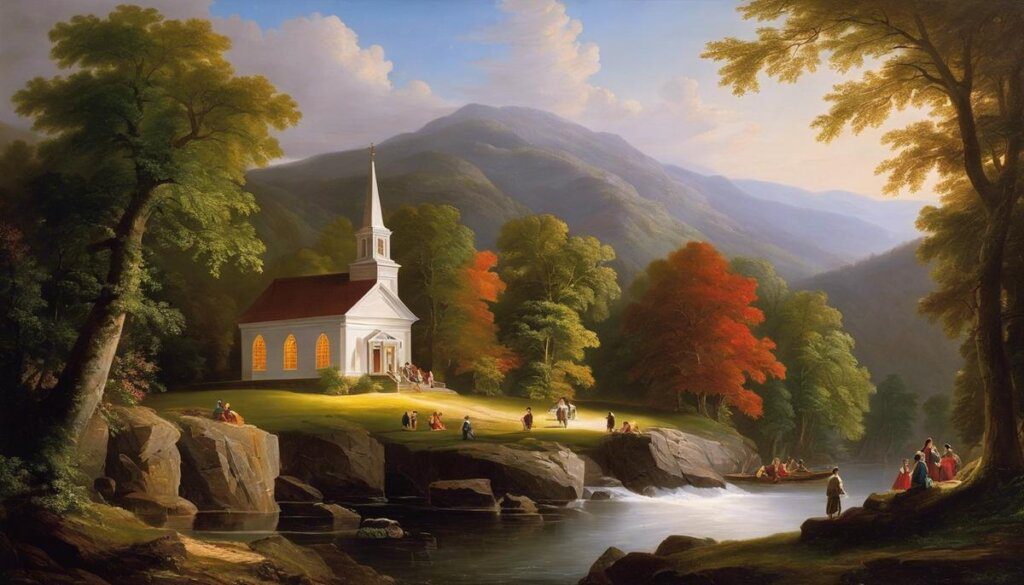

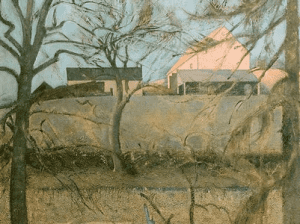

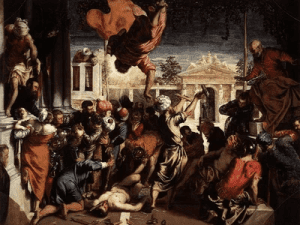

Responses